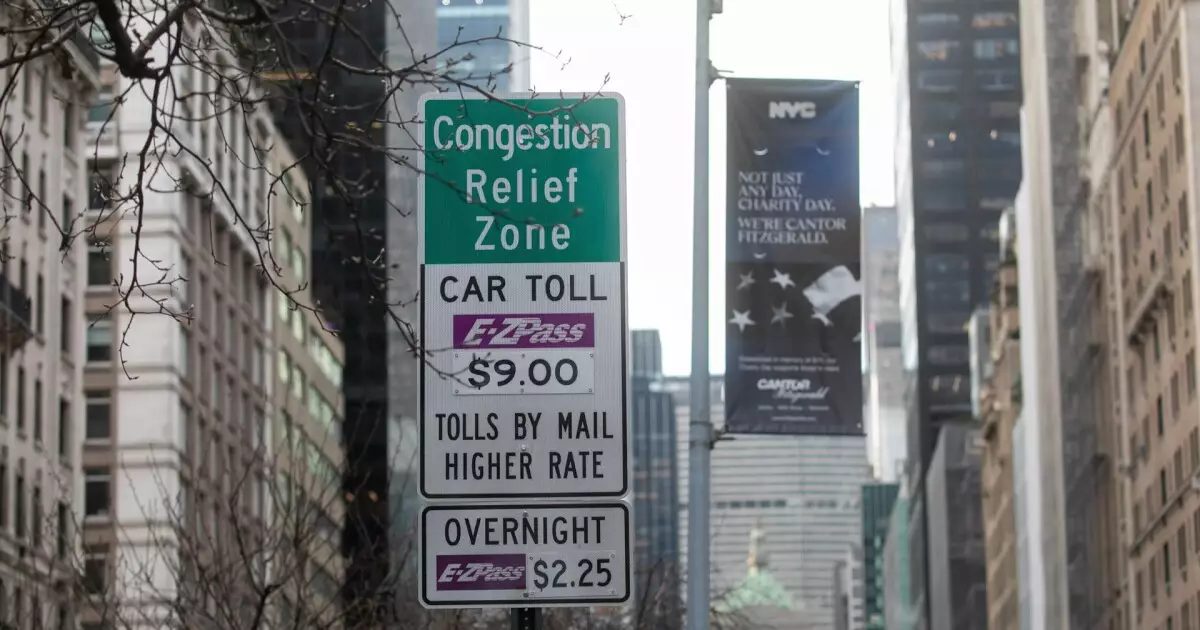The decision to terminate the federal approval of New York City’s congestion pricing program marks a significant turning point in the city’s pursuit of innovative transportation solutions. This program, which was initiated to alleviate traffic congestion in Manhattan, has been celebrated and criticized in equal measure. As we delve into the intricacies of this debacle, we uncover not only the operational challenges but also the socio-political ramifications that have arisen in its wake.
Congestion pricing has been a topic of debate since it was first proposed by former Mayor Michael Bloomberg in 2007. It aimed to implement tolls for vehicles entering the most crowded parts of Manhattan, a strategy intended to generate revenue while simultaneously reducing the heavy traffic burden that plagues the city. In January, the city rolled out a program that charged $9 for vehicles entering below 60th Street, representing a critical milestone in the effort to manage urban congestion.
The plan faced substantial opposition and legal challenges, illustrating the complexities of implementing such measures in a densely populated metropolitan area. When Governor Kathy Hochul suspended the program last June, citing cost concerns, many assumed it was a death knell for a project that had faced serious hurdles from the very beginning.
However, it was revived with lowered tolls in November—a clear indication of its contentious but resilient nature. The Metropolitan Transportation Authority (MTA) aimed to use the revenue generated to back a $15 billion bond for critical capital projects. This revival demonstrated a commitment to addressing the city’s transit issues, even as political tensions simmered.
The termination of federal support by the Trump administration has raised questions about the political motivations behind such a drastic intervention. Transportation Secretary Sean Duffy characterized the congestion pricing scheme as detrimental to working-class Americans and small business operators who rely on free highway access. This framing reveals a broader political narrative that pits urban policy against rural concerns, often amplifying tensions between different regions and demographics.
Duffy’s assertion that local commuters had already invested significantly in infrastructure through taxes presents a strong argument against imposing additional tolls. The criticism that the program lacked a toll-free alternative is also noteworthy, as it points to a potential oversight in the planning stage. By suggesting that the program primarily aims to generate revenue for public transit rather than directly reduce congestion, the Trump administration has opened the door to skepticism regarding the intentions behind New York’s initiative.
In response to the federal government’s withdrawal of support, the MTA has initiated a legal challenge in hopes of keeping the congestion pricing program operational. Chair Janno Lieber labeled the program a “highly successful” initiative contributing to reduced congestion and improved travel times. This statement emphasizes a crucial aspect of the debate: the tangible benefits that can arise from innovative urban policy, which may ultimately outweigh political disagreements.
The lawsuit will likely hinge on whether the MTA can convincingly demonstrate the program’s positive impact on urban mobility while countering federal claims regarding its viability. The outcome of this legal conflict will not only shape the future of NYC’s congestion pricing but will also serve as a precedent for similar initiatives in other urban centers across the United States.
This escalating clash is emblematic of a larger struggle in urban transportation policy, where local innovations must navigate a complex federal landscape. Cities seeking to implement congestion pricing must consider political ramifications and the varied interests of stakeholders—from commuters to local businesses. The ongoing conflict in New York City raises fundamental questions about the future of urban transportation management, especially in an era where cities face unprecedented challenges related to traffic congestion and environmental sustainability.
Ultimately, it is evident that moving forward requires a reevaluation of how urban policies are formulated and what metrics of success are prioritized. As other cities look to New York’s congestion pricing program as a model—or a cautionary tale—the discourse surrounding local autonomy versus federal oversight is likely to intensify.
The fight over New York City’s congestion pricing program is far more than a battle over tolls. It represents a critical moment in the evolution of urban planning and policy-making, highlighting the intricate dance between innovation, legalities, and political interests. As this saga unfolds, it will be essential to watch how it informs not only New York’s future but also that of cities striving to navigate the complexities of modern transportation challenges.

